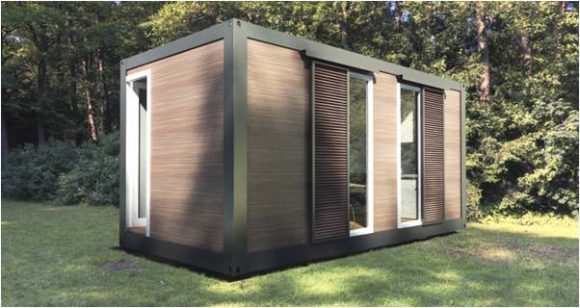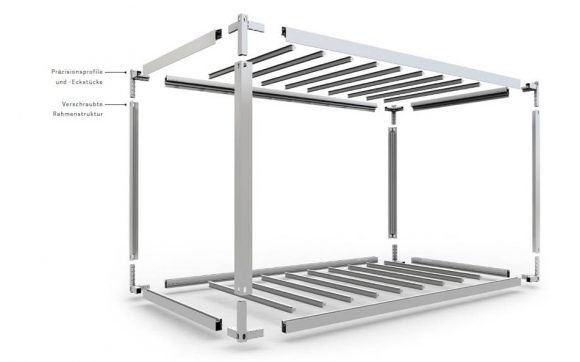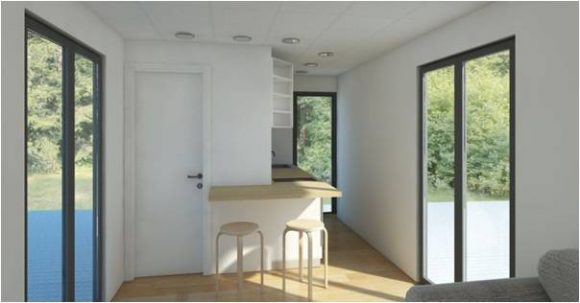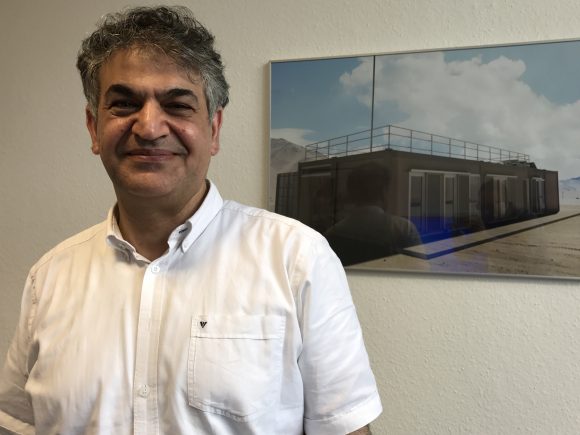A few weeks ago I traveled to Berlin, Germany. During my stay I visited a used machine tools company called Innovac GmbH where I met with its owners Dr. Mohammad Ehsasi and his wife, Cathy Farrar. Innovac sells just about every type of equipment—from woodworking machines, presses, rotary transfers and refrigeration machines to milking machines. It’s always interesting to meet other machinery dealers because I get to learn about their business philosophies and find out how they got into the esoteric used machine tools racket.
Dr. Ehsasi grew up in Iran. He went to the United States in 1976 to get a master’s degree in physics at the University of Maine where he met his wife Cathy. After a few years the couple moved to Berlin where Ehsasi did research at the world-renowned Max Planck Institute.
When the Berlin Wall fell in 1989 a lot of idle used equipment and entire factories came on the market in East Germany. Ehsasi had many contacts in Middle Eastern countries who were looking to acquire bargain priced used equipment so he got into the business of moving entire factories in a wide range of industries to an equally wide range of countries in Europe and around the world. As time went on Ehsasi stopped the labor-intensive transport of entire factories and focused on individual pieces of equipment.

Dr. Ehsasi is a renaissance machinery dealer. Several years ago he and his wife started a B2B magazine in Germany called Trade & Contact that covered the machining industry around the world. They told me it was a labor of love that they unfortunately had to end because producing it took too much time and too many resources while they were also trying to run a machinery business—familiar story.

Today Ehsasi has a new passion project, a company called H.O.M.E. Modular Systems. After the natural disasters of Hurricane Katrina in 2005 and the earthquake in Japan in 2011 Ehsasi realized the world needed quality temporary housing for disaster relief. Temporary housing kits already existed, but they required the components of the buildings to be welded together, and their quality standards varied. Ehsasi’s temporary housing system on the other hand uses a simple screw-connected framework which enables end users to assemble and disassemble structures easily themselves. Ehsasi says that two people with a forklift can assemble a structure’s framework in one hour. He says that in 40 hours an entire living space can be finished with ready-made components for a bedroom, office, kitchenette and bathroom. The Universal Room Modules in a disaster area can be easily disassembled and transported after the crisis ends to new places to be used for new applications such as another shelter or a standalone office. Using modern manufacturing techniques it is possible for H.O.M.E. to produce 200 or more modules in one day.

However, Ehsasi’s unique vision is to produce temporary structures of high enough quality that people will buy them to use as living or working spaces in a normal economy, not just in disaster areas. Recently, Ehsasi has engineered heavier duty modules that can be stacked up to three levels. Local building materials can be used and the potential for designs is limitless, making them attractive for both architects and end-users.
We machinery dealers have to be flexible. There is a finite amount of iron treasure to trade in this world but an infinite amount of new ideas to try out and needs to meet.
Question 1: Could you live happily in a 400 square foot house?
Question 2: Do you feel like you are anti-immigrant?
For more information email info@innovac-home.de or go to www.innovac-home.de


8 Comments
Certainly NOT anti-immigrant. However…. I DO support my fellow citizens. some of whom were immigrants… others have been here for generations. I think there is A LOT of publicity out there to support immigrants? Maybe that message “drowns” out fellow “non-immigrants, and they feel left out.
Why don’t successful immigrants migrate to their homelands and make it better?
Home many immigrants are involved with China’s government? How many Australians are Mayors of cities in India? etc.
I think its awesome that this guy immigrated here and has a job, is turning a profit and making the world a better place. Now the immigrants that come across the border and have 20 kids then expect me to pay for them. They can get out. We need more immigrants like Dr. Ehsasi. Welcome deutschland brother.
That’s about the size of my husband’s condo when I first met him; he also had a roommate at the time. With two kids now that would be a challenge for our family, but in my single or married, pre-kids days it would have been ok. The biggest problem, as well described by George Carlin, is stuff. We all quickly fill the space we have and so downsizing is not easy.
I lived as an immigrant in central Europe and am now married to an immigrant to the US. We both had a lot of bureaucracy to put up with to legally stay in each other’s home countries. I don’t believe the people are the problem but do believe there should be a better way to make everything work (sure wish I had some brilliant solution, but I don’t). On the one hand, it isn’t fair to the people who go through the effort to come here legally that others should be rewarded for not doing so. On the other hand, it is a little ridiculous to expect to send everybody back. As to the refugees, I believe we have to either be willing to help them take refuge by providing a safe place or to help make their homes a safe place again. Closing our borders to refugees without providing some other kind of help to them doesn’t really make us safer.
Question 1: I lived in Japan for 11 years, so, YES!
Question 2: My husband is Japanese, and after 27 years here finally took the step to get his citizenship. When I lived in Japan, it was not easy to maintain my visitor status, but we followed the rules. Immigration is not an easy question…When I think about it with my heart, I think that if my country was miserable and there was a land of opportunity within my reach, I have to say I’d try to get there. My logical side says, “all are welcome who follow the rules.” All I DO know is that stereotypes and generalizations that oversimplify the situation are neither accurate nor productive.
Thanks for making us think!
Legal immigration of course!
Illegal immigration no way!
I’m an immigrant and did it the legal way and have been an American for 38 years.
400 sq ft sounds like RV living. It would be worth a try providing I could put it in my garage just incase I needed to step out.
I could most definitely live in a 400 sq. ft house. It’s all about maximizing the space you have available and getting rid of all that “stuff” accumulated over the years. We’ve already had to downsize twice, each time we renovated our home (total guts both times).
I can’t find any info on the H.O.M.E. Modular Systems. It looks interesting. Do they have a website?
Hi Dick. It looks like their website isn’t working or something. You tried the URL under story?
http://www.google.com/url?q=http%3A%2F%2Fwww.innovac-home.de&sa=D&sntz=1&usg=AFQjCNHFz9rwigziDmU-70eLLnKjc9_8zQ
Or the email we listed?